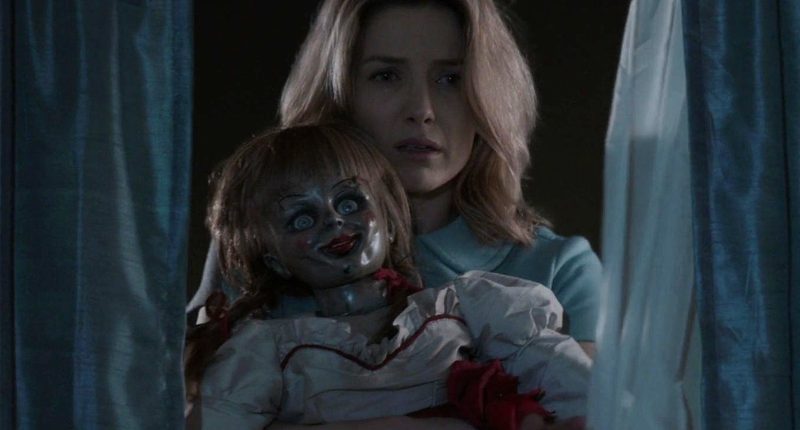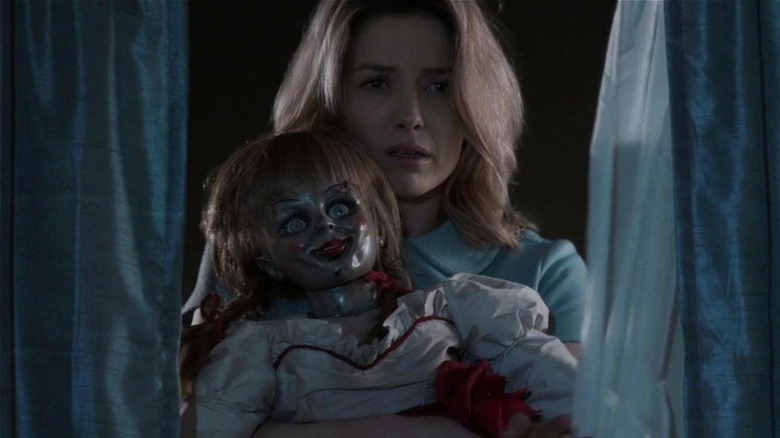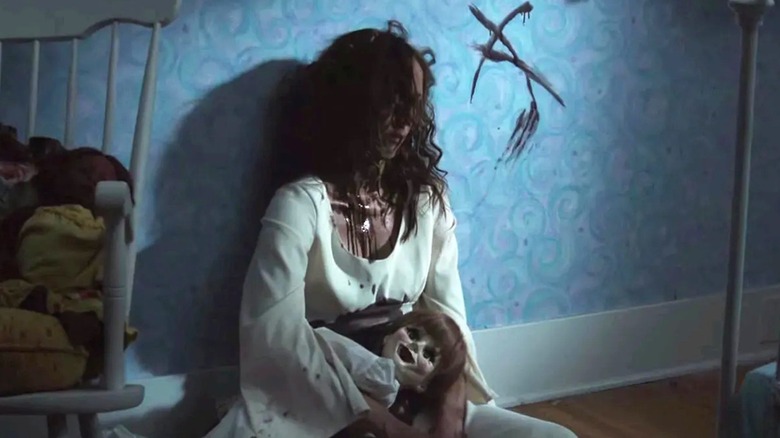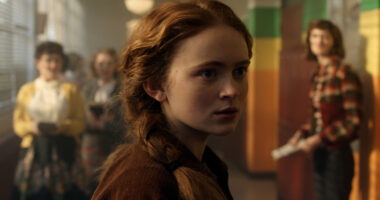Share this @internewscast.com
The “Conjuring” universe introduces viewers to Ed and Lorraine Warren, played by Patrick Wilson and Vera Farmiga. This married duo of demonologists is renowned for assisting families plagued by hauntings and paranormal occurrences. They are especially notable for examining the Amityville Haunting, the Enfield poltergeist, and the ordeals of the Perron family. The horror series also highlights various haunted artifacts the Warrens encountered, with the demonic doll Annabelle being the most famous among them.
Annabelle is the sole artifact from this collection to spawn her own “Conjuring” spin-off series. This spin-off currently comprises “Annabelle” (2014), “Annabelle: Creation” (2017), and “Annabelle Comes Home” (2019). The doll has been part of the “Conjuring” narrative from the get-go, first seen in 2013’s “The Conjuring” before gaining her trilogy. In her debut film, Annabelle is depicted as a cursed toy that disturbs two young women until she is sealed in a case within the Warrens’ home to contain her malevolent spirit.
Given that the primary “Conjuring” films are rooted in real-life cases handled by the Warrens, it’s natural for viewers to question if the Annabelle doll has a true story behind it. Similar to how you can visit the actual house featured in “The Conjuring,” there’s also a real doll that inspired the Annabelle of the films. However, the genuine Annabelle looks nothing like her movie counterpart and comes with a distinct history of her own.
The real Annabelle is a Raggedy Ann doll
While the Annabelle doll in the “Conjuring” movies is based on a real doll named Annabelle, there are some dramatic differences between them. The most notable one is that the actual Annabelle is a classic Raggedy Ann doll, not a porcelain one. This change may’ve partly been made because of the difficulties of securing the rights to the Raggedy Anne toy, but it was also likely an attempt to make Annabelle much creepier and more sinister-looking in “The Conjuring.” Other horror films featuring evil dolls, like “Child’s Play” and “The Boy,” have also gone this route, as porcelain dolls are considered scarier due to their more life-like appearance (like their jointed limbs and blinking eyes).
Though her looks were changed, parts of Annabelle’s backstory as presented in the “Conjuring” movies are accurate to the real-life Warrens’ accounts. At the end of “Annabelle,” a mother sees the doll in a store and decides to buy it for her adult daughter. However, after she gifts it to her, it begins moving around her daughter’s home and doing odd things. This mirrors the origin story of the real doll as recounted on the website for the psychic research society the Warrens founded.
The daughter and her roommate supposedly experienced strange activity with the doll, which is when the demonologists stepped in. In the “Conjuring” films, this is depicted when the Warrens take the doll from the women to lock away in their museum at the beginning of “Annabelle Comes Home” (which itself marks the end of both the current “Annabelle” movie series and their timeline).
The real Annabelle isn’t linked to a cult
The 2014 movie “Annabelle” presents the doll’s dark history as being rooted in the actions of a cult. In the film, a woman named Annabelle Higgins (Tree O’Toole) and her boyfriend, both of whom are members of said cult, break into Annabelle’s estranged parents’ house and kill them. While attacking her parents’ neighbors, including an expectant mother named Mia (Annabelle Wallis), Annabelle is shown holding the Annabelle doll (which Mia’s husband had bought for her) before dying by suicide in their nursery. The implication, of course, is that Annabelle’s spirit will now inhabit the doll.
Three years later, the 2017 prequel “Annabelle: Creation” added more context to this scene, revealing that the doll’s creator, Samuel (Anthony LaPaglia), and his wife lost their daughter — also named Annabelle (Samara Lee), but who goes by the nickname “Bee” — at seven years old after a car accident. They subsequently lock up their daughter’s room until a group of orphans begins to reside in their home and opens it up, finding the doll in Annabelle’s closet and effectively releasing a demon hiding behind the spirit of their deceased daughter.
Apparently, both of these films borrow elements from the real doll’s origin story. According to the information on the Warrens’ website, the daughter who owned the doll eventually had a séance and claimed a spirit named Annabelle Higgins was attached to the toy. She was allegedly a young girl, just like Bee in “Annabelle: Creation,” but died in the same building, similar to what happens to Annabelle Higgins in “Annabelle.”
If you or someone you know is struggling or in crisis, help is available. Call or text 988 or chat 988lifeline.org











